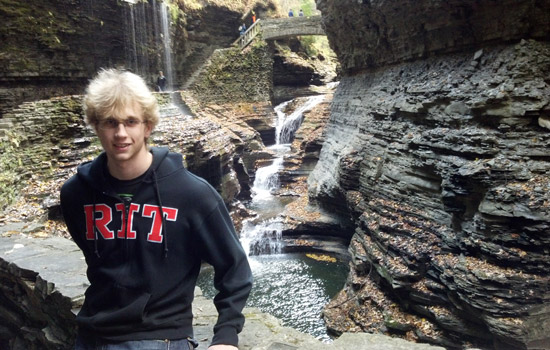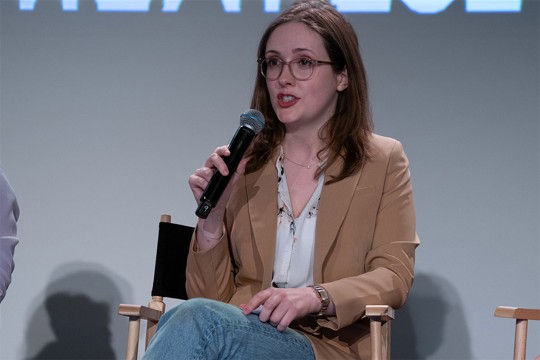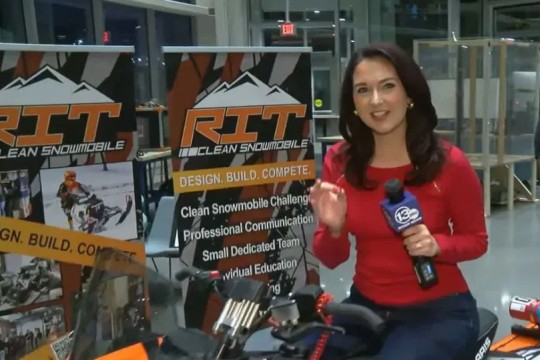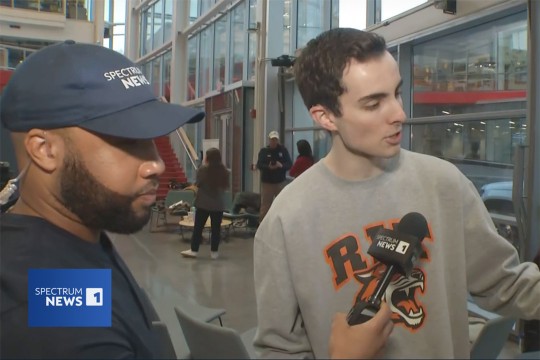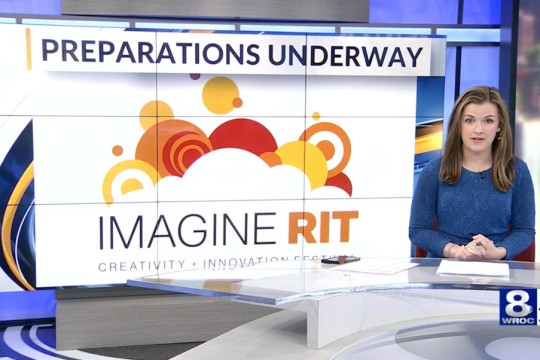Two majors are better than one
Student spotlightPatrick Morabito, fourth-year mechanical engineering and fine arts studio
Patrick Morabito, a fourth-year mechanical engineering and fine arts studio student.
It’s not uncommon for college students to have double majors like engineering and Spanish or business and economics. Patrick Morabito may have one of the more interesting double majors at RIT as a fourth-year mechanical engineering and fine arts studio student who enjoys research and solving puzzles.
Question: Where are you from?
Answer: I’m from Fairport, N.Y.
Q: What brought you to RIT?
A: I really liked the robust co-op program, the fact that RIT also has a great art school and that it was close enough to home for convenient travel, but far enough to give some breathing room.
Q: Why did you decide to pursue both a mechanical engineering and fine arts degree?
A: The mechanical engineering degree came about from my experience in high school with FIRST Robotics. I love creating things, which is essentially the same reason that I pursue the arts, too—it’s just a slightly different kind of creation.
Q: What is something that most people might not know about you?
A: I am addicted to mechanical puzzles. Rubik’s Cubes barely scratch the surface in terms of the mechanical puzzles that are out there. If I had a desktop 3-D printer I would probably just sit at home designing and making puzzles nonstop.
Q: What types of things do you do around campus?
A: I’ve worked for the Academic Support Center in the Bates Study Center as a mathematics and physics tutor for the past four years. I’ve also been a mechanical engineering tutor, a teacher’s assistant for several classes and I help with a lot of research.
Q: What is your favorite course to work as a teacher’s assistant in?
A: It’s a tie between Wines of the World I and Food and Wine Pairing—both of which are fantastic classes that I recommend everyone take.
Q: What type of research are you doing?
A: I’ve worked with Michael Long, a scientist in the Chester F. Carlson Center for Imaging Science, for more than two years doing agent-based modeling research, a powerful simulation modeling technique. We have modeled disasters and evacuations of small communities with various types of communication networks. This was supported by the National Science Foundation Partnerships for Innovation Program and we’ve published two papers on it, with a third under review. Recently we began studying how implementation of the plus and minus grading system will affect RIT students’ GPAs next year.
Q: Where does your passion for research come from?
A: Honestly, I just enjoy the work. Dr. Long will come to me with a scenario to model and I get to build a simulation from the ground up to deal with these complicated social problems. It’s kind of like a fun little puzzle, plus there aren’t any harsh deadlines like with schoolwork.
Q: What do you plan on doing after graduation?
A: I am strongly considering applying for a Fulbright Fellowship or I may find a fun company to work for and make some cool stuff. I have a lot of other ideas that involve doing things with that fine arts degree.
Q: Any advice you would give to other RIT students?
A: Do your homework and go to class. It may seem obvious, but they’re also really important things to do if you’re making the effort to go here. Go big or go home!
Scott Bureau covers student affairs for University News. Contact him at sbbcom@rit.edu with “Student Spotlight” suggestions.











